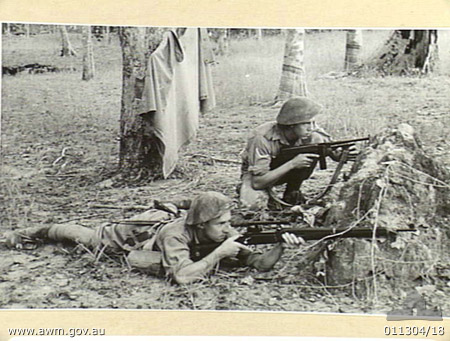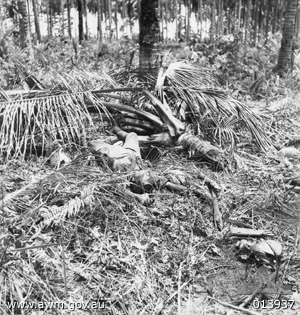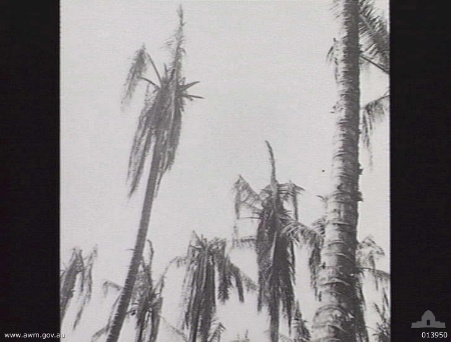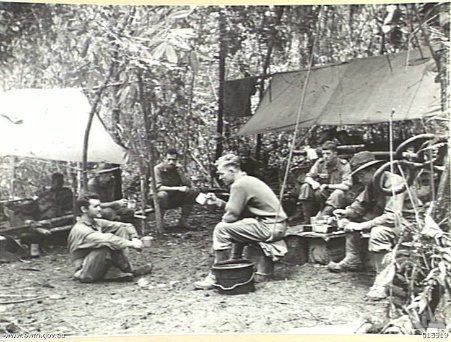Original post deleted and reposted in this form due to problems with original links.
I disagree.
According to W02 Steve King, an instructor at the School of Infantry Sniper Cell, today’s sniper teams (pair) carry out the same role.
"A sniper’s primary role is to kill selected targets on the battlefield. That is his one and only role! Officers, commanders at any level, signallers … you always want to take these fellows out. "Snipers have a limited capability to engage crew-served weapons, to put a round into a mortar sight or a machine-gun receiver. “There are a number of general tasks a sniper team can fill … to harass the enemy or reconnaissance but if it is doing that it is not being employed properly,”
My bold. Sniper
Bearing in mind that we’re talking about WWII, it certainly wasn’t the case in the IJA that snipers had a primary function of reconnaissance and observation. There’s a useful discussion here, although unfortunately not a forum as easy to read as WWII in Color.
http://www.f16.parsimony.net/forum27947/messages/5916.htm
In WWII the Australian army, ideally, ran true snipers in teams of two, the shooter and the spotter. The latter’s job was to identify targets not seen by the shooter and also to look out for threats to the team while the shooter was occupied. Photo 1 below. (Caption from Australian War Memorial http://www.awm.gov.au/ 1942-01, MALAYA. PRIVATE J. R. MADDEN, AN AIF SNIPER, AND LANCE CORPORAL BLOMFIELD WITH A THOMPSON SUBMACHINE GUN ON THE LOOK OUT FOR ENEMY TROOPS IN A RUBBER PLANTATION.) The blanket or groundsheet hung on a tree in the background hardly suggests that this was a picture taken in true action postions, unless the sniper team wanted to draw attention to their presence.
The Japanese often operated alone, notably in tree tops where they commonly stayed until discovered and killed.
Photo 2 below. (Caption from Australian War Memorial 1942-12-28. PAPUA. BY EXPERIENCE ALLIED TROOPS HAVE LEARNED TO TAKE NO CHANCES WITH ENEMY TREE TOP SNIPERS. EVERY TREE TOP THAT COULD HOUSE SNIPERS WAS SPRAYED WITH HUNDREDS OF ROUNDS FROM AUTOMATIC WEAPONS. ONE BREN GUNNER VARIED THE TREATMENT WHEN HE SIGHTED A SNIPER. USING THIS EXTREMELY ACCURATE AUSTRALIAN-MADE WEAPON HE FIRED SEVERAL BURSTS AT THE TOP OF A COCANUT TREE CONCENTRATING HIS FIRE AT A SPOT SIX FETT FROM THE TOP. THE WEIGHT OF THE SNIPER CAUSED THE TREE TOP TO BREAK AND HE WAS KILLED WHEN HE HIT THE GROUND 60 FEET BELOW. THIS PHOTO SHOWS SNIPER AND THE TOP PORTION OF THE TREE LYING ON THE GROUND. AT THE TOP OF THE SNIPER’S OUTSTRETCHED RIGHT HAND IS HIS BROKEN RIFLE. ) A nice piece of positive war propaganda is the reference to the Australian-made Bren, which implies that not only was it made in Australia but that it was also an Australian design, which we all know it wasn’t.
Photo 3 below. (Caption from Australian War Memorial 1942-12-28. PAPUA. ONE OF THE MOST EFFECTIVE MEANS OF FREEING THE COCOANUT GROVES OF JAPANESE SNIPERS WAS TO SPRAY TOPS OF COCOANUT TREES WITH INTENSE GUN FIRE. THE PHOTO SHOWS THE EFFECT OF THIS INTENSE GUN FIRE DURING THE AUSTRALIAN ADVANCE ON BUNA. )
Snipers don’t necessarily achieve or try for one shot - one kill, nor even shoot aimed shots at people to disrupt the enemy. Photo 4 below. (Caption from Australian War Memorial 1943-08-11. NEW GUINEA. MOUNT TAMBU FIGHTING. A HOSPITAL IN THE JUNGLE AT THE FOOT OF MOUNT TAMBU. JAPANESE SNIPERS PUT 23 BULLETS THROUGH THE TARPAULIN COVERING WITHOUT HITTING ANY OF THE WOUNDED.)
If shooting is secondary, there’d be no need for special sniper weapons as the basic bolt action infantry weapons in good condition in WWII were generally sufficiently accurate to be used as sniper weapons by proficient marksmen at the distance snipers were likely to operate at. And indeed were usually the weapons used by ‘snipers’ (see next paragraph). Special sniper weapons with better sights just gave that extra bit of accuracy which will improve the results of good marksmen but won’t make much difference for a lot of average shooters.
Which leads me to the point that references to ‘sniper’ are usually wrong. Usually it referred to an unseen rifleman firing at the group calling him a sniper. A true sniper is a specifically trained and very proficient marksman adept at high level field craft. Most so-called snipers in WWII, in the Pacific anyway, were simply riflemen detailed to undertake aimed fire at selective targets with standard infantry weapons to disrupt and demoralise the enemy.












